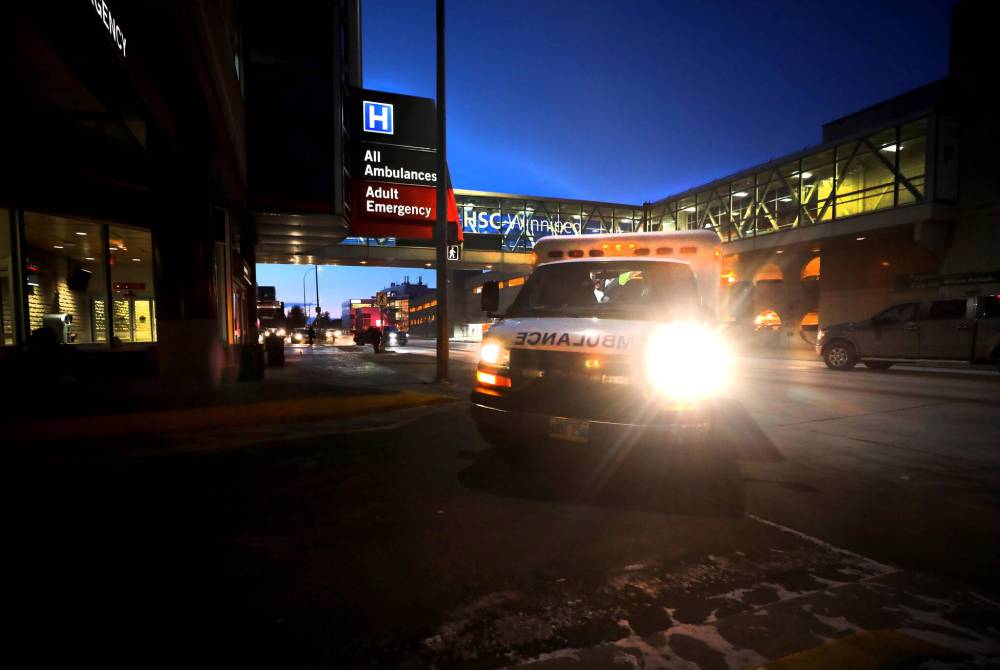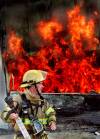Emergency-vehicle traffic technology pilot a success and city should expand it, WFPS says
Advertisement
Read this article for free:
or
Already have an account? Log in here »
To continue reading, please subscribe:
Monthly Digital Subscription
$0 for the first 4 weeks*
- Enjoy unlimited reading on winnipegfreepress.com
- Read the E-Edition, our digital replica newspaper
- Access News Break, our award-winning app
- Play interactive puzzles
*No charge for 4 weeks then price increases to the regular rate of $19.95 plus GST every four weeks. Offer available to new and qualified returning subscribers only. Cancel any time.
Monthly Digital Subscription
$4.99/week*
- Enjoy unlimited reading on winnipegfreepress.com
- Read the E-Edition, our digital replica newspaper
- Access News Break, our award-winning app
- Play interactive puzzles
*Billed as $19.95 plus GST every four weeks. Cancel any time.
To continue reading, please subscribe:
Add Free Press access to your Brandon Sun subscription for only an additional
$1 for the first 4 weeks*
*Your next subscription payment will increase by $1.00 and you will be charged $16.99 plus GST for four weeks. After four weeks, your payment will increase to $23.99 plus GST every four weeks.
Read unlimited articles for free today:
or
Already have an account? Log in here »
Winnipeg ambulances and fire trucks could soon automatically trigger green lights through most of the city, allowing faster emergency responses.
An emergency vehicle pre-emption pilot project was a success, so the city should pay to expand it next year, according to a new Winnipeg Fire Paramedic Service report.
“It makes travelling through intersections safer and decreases the time it takes first responders to arrive at an emergency scene,” the report says.

WFPS will seek $1.8 million in 2026 capital funding and $200,000 to cover operating costs to expand the program. That would extend its reach to 437 “higher-risk” intersections, including the 17 included in the pilot, out of Winnipeg’s total 693.
In a brief statement, Mayor Scott Gillingham said he will support the expansion.
“This is a smart way to significantly speed up emergency response times and improve road safety for our staff and the public. Expanding this technology across the city will mean faster help when Winnipeggers need it most,” wrote Gillingham.
The mayor was not available for an interview Monday.
WFPS tested the system in Osborne Village between April 2024 and April 2025, equipping nine emergency vehicles to support it.
Through the pre-emption system, an emergency vehicle transmits information about lights and sirens, direction of travel, speed, and turn signals to a controller at equipped intersections. As it approaches those intersections, that information is used to pre-empt the normal operation of traffic signals, such as by providing a green light.
Due to construction in the Osborne area, the city said it can’t directly compare response times before and during the pilot, though crews found vehicles equipped with the technology were faster than those without it during the testing period, the report notes.
WFPS estimates the system will make response times 15 to 20 per cent faster.
“I think there are some remarkable improvements to travel time,” said Coun. Vivian Santos, chairwoman of community services.
“I think there are some remarkable improvements to travel time.”
Santos (Point Douglas) said finding ways to speed up emergency services is especially important as Winnipeg’s population grows.
She said the technology is not needed at every intersection, since some have lower speeds and less traffic.
WFPS found the new technology generally didn’t create lasting traffic delays, with most responses resulting in interruptions of less than 50 seconds.
The system is also credited with safety improvements, since crews can avoid the risk of entering an intersection on a red light.
Winnipeg Fire Paramedic Service did not grant an interview request Monday. In a statement, a spokeswoman noted its estimates for improved response times are based on predictive modelling and other cities’ emergency vehicle pre-emption experiences.
The service hopes to expand its emergency vehicle pre-emption program over two years, starting in 2026, if city council approves the funding in next year’s budget.
Union leaders who represent firefighters and paramedics say the new system is a good, but limited, step forward.
“We do welcome the technology but it’s not a replacement for investing in staffing and resources that are greatly needed,” said Nick Kasper, president of the United Fire Fighters of Winnipeg.
“We do welcome the technology but it’s not a replacement for investing in staffing and resources that are greatly needed.”
He said there is a critical need for more emergency workers in order to reduce lengthy response times.
“The call volume has skyrocketed… and that’s why our response times are the slowest in the country,” said Kasper.
Hundreds of new positions would be required to substantially reduce emergency response times, he said.
UFFW publicly called out a long wait for fire service recently to highlight its concerns. The union said it took more than nine minutes for the first fire truck to arrive at a blaze that gutted a home in St. Vital on Aug. 10. The national standard is four minutes.
“The reason that fire trucks need to be on scene in four minutes is because fires double in size every 30 to 60 seconds,” said Kasper.
The union representing Winnipeg paramedics said it also supports the technology and echoed the call for more staff.
“It’s really important that we recognize we can get people there faster, but right now there’s just not enough of them… there’s far more work to (do),” said Kyle Ross, president of the Manitoba Government and General Employees’ Union.
joyanne.pursaga@freepress.mb.ca
X: @joyanne_pursaga

Joyanne is city hall reporter for the Winnipeg Free Press. A reporter since 2004, she began covering politics exclusively in 2012, writing on city hall and the Manitoba Legislature for the Winnipeg Sun before joining the Free Press in early 2020. Read more about Joyanne.
Every piece of reporting Joyanne produces is reviewed by an editing team before it is posted online or published in print — part of the Free Press‘s tradition, since 1872, of producing reliable independent journalism. Read more about Free Press’s history and mandate, and learn how our newsroom operates.
Our newsroom depends on a growing audience of readers to power our journalism. If you are not a paid reader, please consider becoming a subscriber.
Our newsroom depends on its audience of readers to power our journalism. Thank you for your support.
History
Updated on Monday, September 29, 2025 7:54 PM CDT: Fixes typo





